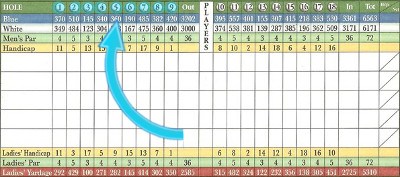
Outward Nine: Explained
Golf is a game of precision and strategy, and it involves traversing a course that is divided into sections. One of the essential terms in golf is the Outward Nine. In this blog post, we will delve into the significance of the Outward Nine, its meaning, and how it affects the game.
The Outward Nine:
In golf, a standard 18-hole course is divided into two nine-hole sections: the Outward Nine and the Inward Nine. The Outward Nine refers to the first half of the golf course, consisting of holes 1 to 9. These holes are played before making the turn or moving on to the Inward Nine.
Importance of the Outward Nine:
The Outward Nine holds significant importance in a round of golf. It sets the tone for the game and greatly impacts the player's overall performance. The player’s performance during the Outward Nine often determines their confidence and approach for the remaining holes.
Factors and Strategies:
- Course familiarity: With the Outward Nine being the first half of the course, players may have limited knowledge of the conditions, layout, and challenges. It could be performed as a warm-up before adapting to the nuances of the course and settling into a rhythm.
- Mental state: A good start on the Outward Nine often boosts a player's morale and helps maintain mental focus throughout the game. Conversely, a poor start can have a negative impact on confidence and concentration.
- Scoring opportunities: The Outward Nine may present some scoring opportunities due to the varying difficulty levels of the holes. Players often aim to score well during this section to build a solid foundation for the remaining holes.
- Course management: Strategizing and managing the course effectively during the Outward Nine is crucial. Players need to determine the optimal approach for each hole, including considering hazards, selecting appropriate clubs, and making smart shots.
Outward Nine vs. Inward Nine:
The Outward Nine and the Inward Nine offer contrasting experiences during a round of golf. While the Outward Nine sets the initial pace and tests the player's adaptability, the Inward Nine often brings higher expectations and pressure as it brings the round to a close.
It is important to note that holes 9 and 18 are often referred to as “the turn.” After completing the Outward Nine, players have a break at the clubhouse before tackling the Inward Nine. The turn provides an opportunity for rest, reflection, and resetting strategies for the final stretch of the game.
Conclusion:
The Outward Nine plays a pivotal role in a round of golf. It offers a chance for players to acclimate themselves to the course and sets the stage for the remainder of the game. Strategizing, adapting, and maintaining a positive mental state during the Outward Nine can greatly influence a player's overall performance. So, next time you step onto the course, pay attention to the Outward Nine and make the most of this significant section of your golf round!





